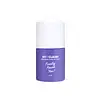What's inside
What's inside
 Key Ingredients
Key Ingredients

 Benefits
Benefits

 Concerns
Concerns

 Ingredients Side-by-side
Ingredients Side-by-side

Water
Skin ConditioningCaprylic/Capric Triglyceride
MaskingGlycerin
HumectantButylene Glycol
HumectantDibutyl Adipate
EmollientSaccharide Isomerate
HumectantGlyceryl Stearate
EmollientParfum
MaskingKojic Acid
AntioxidantPEG-100 Stearate
Cysteamine Hcl
AntioxidantPEG-40 Hydrogenated Castor Oil
EmulsifyingLavandula Hybrida Herb Oil
PerfumingCetyl Alcohol
EmollientPEG-75 Stearate
Ceteareth-20
CleansingAllantoin
Skin ConditioningMorus Alba Bark Extract
Skin ConditioningPropylene Glycol
HumectantAloe Barbadensis Leaf Extract
EmollientGlycine Soja Seed Extract
Skin ConditioningCarbomer
Emulsion StabilisingPhenoxyethanol
PreservativeTriethanolamine
BufferingChlorphenesin
AntimicrobialPentaerythrityl Tetra-Di-T-Butyl Hydroxyhydrocinnamate
AntioxidantBHT
AntioxidantXanthan Gum
EmulsifyingCaprylyl Glycol
EmollientTocopheryl Acetate
AntioxidantCitric Acid
BufferingSodium Citrate
BufferingEthylhexylglycerin
Skin ConditioningWater, Caprylic/Capric Triglyceride, Glycerin, Butylene Glycol, Dibutyl Adipate, Saccharide Isomerate, Glyceryl Stearate, Parfum, Kojic Acid, PEG-100 Stearate, Cysteamine Hcl, PEG-40 Hydrogenated Castor Oil, Lavandula Hybrida Herb Oil, Cetyl Alcohol, PEG-75 Stearate, Ceteareth-20, Allantoin, Morus Alba Bark Extract, Propylene Glycol, Aloe Barbadensis Leaf Extract, Glycine Soja Seed Extract, Carbomer, Phenoxyethanol, Triethanolamine, Chlorphenesin, Pentaerythrityl Tetra-Di-T-Butyl Hydroxyhydrocinnamate, BHT, Xanthan Gum, Caprylyl Glycol, Tocopheryl Acetate, Citric Acid, Sodium Citrate, Ethylhexylglycerin
Water
Skin ConditioningCaprylic/Capric Triglyceride
MaskingIsododecane
EmollientNiacinamide
SmoothingCoco-Caprylate/Caprate
EmollientGlyceryl Stearate Citrate
EmollientSalicylic Acid
MaskingSorbitan Oleate
EmulsifyingZinc PCA
HumectantAmylopectin
Dextrin
AbsorbentPolyglyceryl-3 Stearate
EmulsifyingHydrogenated Lecithin
EmulsifyingPhenoxyethanol
PreservativeAllantoin
Skin ConditioningGlycerin
HumectantXanthan Gum
EmulsifyingCapryloyl Salicylic Acid
ExfoliatingAvena Sativa Kernel Extract
AbrasivePentaerythrityl Tetra-Di-T-Butyl Hydroxyhydrocinnamate
AntioxidantCitric Acid
BufferingTromethamine
BufferingPolylysine
Tocopherol
AntioxidantWater, Caprylic/Capric Triglyceride, Isododecane, Niacinamide, Coco-Caprylate/Caprate, Glyceryl Stearate Citrate, Salicylic Acid, Sorbitan Oleate, Zinc PCA, Amylopectin, Dextrin, Polyglyceryl-3 Stearate, Hydrogenated Lecithin, Phenoxyethanol, Allantoin, Glycerin, Xanthan Gum, Capryloyl Salicylic Acid, Avena Sativa Kernel Extract, Pentaerythrityl Tetra-Di-T-Butyl Hydroxyhydrocinnamate, Citric Acid, Tromethamine, Polylysine, Tocopherol
Ingredients Explained
These ingredients are found in both products.
Ingredients higher up in an ingredient list are typically present in a larger amount.
Allantoin is a soothing ingredient known for its protective and moisturizingg properties. Because of this, it is often added to products with strong active ingredients.
Studies show higher concentrations of this ingredient can promote wound healing.
Though it can be derived from the comfrey plant, allantoin is produced synthetically for cosmetic products to ensure purity.
Learn more about AllantoinThis ingredient is an emollient, solvent, and texture enhancer. It is considered a skin-softener by helping the skin prevent moisture loss.
It helps thicken a product's formula and makes it easier to spread by dissolving clumping compounds.
Caprylic Triglyceride is made by combining glycerin with coconut oil, forming a clear liquid.
While there is an assumption Caprylic Triglyceride can clog pores due to it being derived from coconut oil, there is no research supporting this.
Learn more about Caprylic/Capric TriglycerideCitric Acid is an alpha hydroxy acid (AHA) naturally found in citrus fruits like oranges, lemons, and limes.
Like other AHAs, citric acid can exfoliate skin by breaking down the bonds that hold dead skin cells together. This helps reveal smoother and brighter skin underneath.
However, this exfoliating effect only happens at high concentrations (20%) which can be hard to find in cosmetic products.
Due to this, citric acid is usually included in small amounts as a pH adjuster. This helps keep products slightly more acidic and compatible with skin's natural pH.
In skincare formulas, citric acid can:
While it can provide some skin benefits, research shows lactic acid and glycolic acid are generally more effective and less irritating exfoliants.
Most citric acid used in skincare today is made by fermenting sugars (usually from molasses). This synthetic version is identical to the natural citrus form but easier to stabilize and use in formulations.
Read more about some other popular AHA's here:
Learn more about Citric AcidGlycerin is already naturally found in your skin. It helps moisturize and protect your skin.
A study from 2016 found glycerin to be more effective as a humectant than AHAs and hyaluronic acid.
As a humectant, it helps the skin stay hydrated by pulling moisture to your skin. The low molecular weight of glycerin allows it to pull moisture into the deeper layers of your skin.
Hydrated skin improves your skin barrier; Your skin barrier helps protect against irritants and bacteria.
Glycerin has also been found to have antimicrobial and antiviral properties. Due to these properties, glycerin is often used in wound and burn treatments.
In cosmetics, glycerin is usually derived from plants such as soybean or palm. However, it can also be sourced from animals, such as tallow or animal fat.
This ingredient is organic, colorless, odorless, and non-toxic.
Glycerin is the name for this ingredient in American English. British English uses Glycerol/Glycerine.
Learn more about GlycerinPentaerythrityl Tetra-Di-T-Butyl Hydroxyhydrocinnamate (long name, huh?) is a synthetic antioxidant.
It is used to help stabilize other antioxidants or prevent the color from changing in a product.
As an antioxidant, it helps fight free-radical molecules. Free-radical molecules are capable of damaging our cells and other genetic material. Thus, antioxidants may reduce the signs of aging.
This ingredient is oil-soluble.
Learn more about Pentaerythrityl Tetra-Di-T-Butyl HydroxyhydrocinnamatePhenoxyethanol is a preservative that has germicide, antimicrobial, and aromatic properties. Studies show that phenoxyethanol can prevent microbial growth. By itself, it has a scent that is similar to that of a rose.
It's often used in formulations along with Caprylyl Glycol to preserve the shelf life of products.
Water. It's the most common cosmetic ingredient of all. You'll usually see it at the top of ingredient lists, meaning that it makes up the largest part of the product.
So why is it so popular? Water most often acts as a solvent - this means that it helps dissolve other ingredients into the formulation.
You'll also recognize water as that liquid we all need to stay alive. If you see this, drink a glass of water. Stay hydrated!
Learn more about WaterXanthan gum is used as a stabilizer and thickener within cosmetic products. It helps give products a sticky, thick feeling - preventing them from being too runny.
On the technical side of things, xanthan gum is a polysaccharide - a combination consisting of multiple sugar molecules bonded together.
Xanthan gum is a pretty common and great ingredient. It is a natural, non-toxic, non-irritating ingredient that is also commonly used in food products.
Learn more about Xanthan Gum